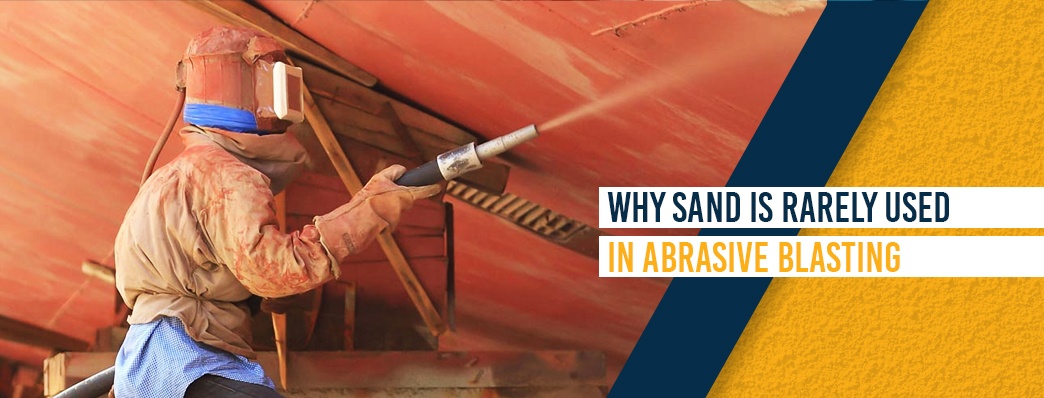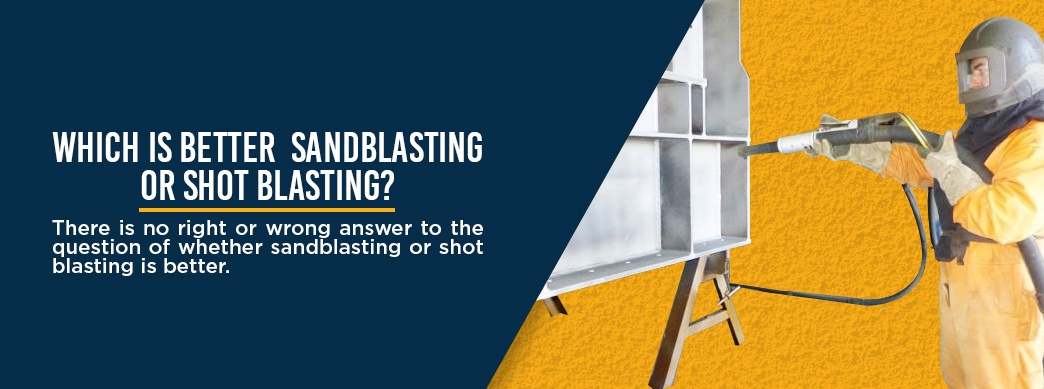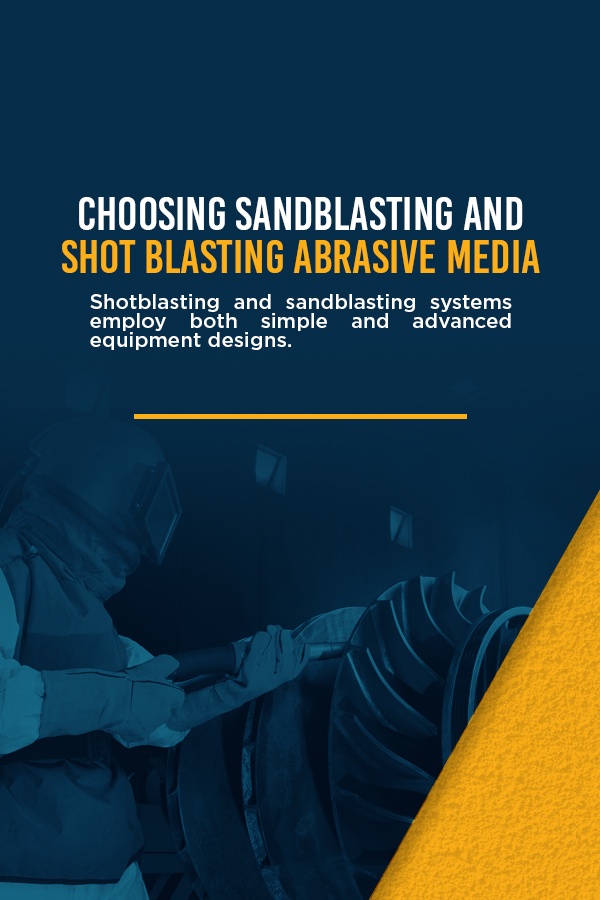
- English
- Español
- Português
- русский
- Français
- 日本語
- Deutsch
- tiếng Việt
- Italiano
- Nederlands
- ภาษาไทย
- Polski
- 한국어
- Svenska
- magyar
- Malay
- বাংলা ভাষার
- Dansk
- Suomi
- हिन्दी
- Pilipino
- Türkçe
- Gaeilge
- العربية
- Indonesia
- Norsk
- تمل
- český
- ελληνικά
- український
- Javanese
- فارسی
- தமிழ்
- తెలుగు
- नेपाली
- Burmese
- български
- ລາວ
- Latine
- Қазақша
- Euskal
- Azərbaycan
- Slovenský jazyk
- Македонски
- Lietuvos
- Eesti Keel
- Română
- Slovenski
- मराठी
- Srpski језик
SHOT BLASTING & SANDBLASTING: WHAT’S THE DIFFERENCE?
2022-09-02
SHOT BLASTING & SANDBLASTING: WHAT’S THE DIFFERENCE?
Edited by Ningbo Zhiye Mechanical Components Co.,Ltd.
September 2, 2020Like many people, you might be confused about the difference between sandblasting and shot blasting. The two terms appear similar but sandblasting and shot blasting are actually separate processes both involved in the overall abrasive blasting business.
The difference between sandblasting and grit blasting, as shot blasting is often called, is straightforward. It lies in the application technique that material cleaning, restoring and preparation industry experts use to apply abrasive material to products being readied for finishing. Essentially, the sandblasting process uses compressed air to shoot some form of abrasive media like sand against the product being treated. Shotblasting employs centrifugal force from a mechanical device to propel treatment media upon the product.
Truthfully, “sand” blasting is now a misnomer. The abrasive blasting industry rarely uses sand as a treatment media because sand has certain properties that make it difficult to work with. There are far better — and safer — blasting media materials on today’s market than silica sand. They include media manufactured from minerals, metals, glass, plastics and organics like corn cobs and walnut shells.
WHY SAND IS RARELY USED IN ABRASIVE BLASTING?
At one time, sandblasting was the mainstay in abrasive treatment. Sand was more readily available than the other media. But sand had issues like moisture content that made it difficult to spread with compressed air. Sand also had a lot of contaminants found in natural supplies.
The biggest challenge in using sand as an abrasive media is its health hazard. Sand used in sandblasting is made of silica. When inhaled, silica particles lodge into the respiratory system, potentially causing severe respiratory illnesses such as silicosis. Silica dust is also a known cause of lung cancer.

The United States Occupational Safety and Health Administration (OSHA) take a dim view of American workers inhaling silica particles. While OSHA doesn’t outright ban silica sand from being used as a media in abrasive blasting operations, they’ve created enough safety regulations to prevent the practice of “sand” blasting today. You can familiarize yourself with these restrictions by reading OSHA’s fact sheet on Protecting Workers from the Hazards of Abrasive Blasting Materials.
Besides being a dangerous abrasive blasting material, sand can’t compare to the excellent selection of modern abrasive materials available for a wide purpose range. Sand is solely restricted to the compressed air blasting method. The centrifugal/mechanical abrasive treatment method is more versatile than sandblasting. However, which method you use to prepare products for finishing depends on many variables.
WHAT IS SANDBLASTING?
Regardless of the abrasive media, the term “sandblasting” refers to the process of propelling that abrasive media with compressed air. This cleaning and preparation procedure takes compressed air as a power source and directs a high-pressure stream of abrasive media toward the given surface. That surface could be auto parts being cleaned of dirt, grease and oil. It could be rusty chains in a shipyard being reconditioned. Or the surface could be old filing cabinets being prepped for powder coating.
Sandblasting is a proven pre-finishing technique that’s been around for over a hundred years. Sandblasting equipment has evolved from uncontained, free-spraying streams of sand creating noxious dust clouds to highly sophisticated contained enclosures with precise abrasive stream control. Sandblasting’s media also changed from sand to more user-friendly materials.
Despite the change in equipment and materials, sandblasting is still the most common and preferred abrasive treatment method. It’s particularly suited to soft and sensitive materials being readied for final finishes. Sandblasting is also a more economical equipment system to purchase, easier to operate and offers excellent quality to the consumer.
WHAT IS SHOT BLASTING?
The term “shot blasting” refers to the process of propelling abrasive media material with centrifugal or mechanical force. Shotblasting has an entirely different pressurizing system than sandblasting. This abrasive treatment method uses a device similar to a spinning wheel to centrifugally accelerate shot-like material and blast it against a surface.
Shotblasting is a much more aggressive abrasive technique than sandblasting. It’s usually used for larger and more difficult preparation objects that need a strong application force and a denser media material to clean and prepare a surface. Shotblasting also requires strict containment as the force of blasted shot could cause collateral damage if the process isn’t confined.
You’ll often find shot blasting centrifugal abrasion treatment in large-scale operations. That could be in shot blasting tanks where steel shot or grit blasts rough surfaces like automobile frames being restored or steel containers being recycled. You’ll also find shot blasting at work where engine components require peening to increase malleability.
WHICH IS BETTER — SANDBLASTING OR SHOT BLASTING?
There is no right or wrong answer to the question of whether sandblasting or shot blasting is better. There are many variables involved in the abrasive blasting treatment business. The best method depends on the surface you’re treating and the type of finish you expect.
Sandblasting is typically a smoother and less invasive abrasion process. However, that also depends on the compressed air pressure you use and the abrasive media material you select. Because sandblasting is less forceful than shot blasting, it’s much more forgiving. With light pressure and soft media materials like organics or glass, you can treat very sensitive surfaces with little risk of accidental damage.
Sandblasting is the ideal solution for cleaning delicate electronic parts or connectors that have corroded. You have many media options with sandblasting such as aluminum oxide that cuts through surface contamination and leaves the undersurface clean but totally intact. For more abrasion with sandblasting, you can step-up to silicon carbide as a media without worrying about over-doing it.
Shotblasting has its place when you require deep abrasive penetration on denser materials. Where sandblasting might be too gentle and time-consuming for treating gears and shafts, shot blasting will quickly prepare thick and heavy surfaces like metal hulls and truck hubs.
Shotblasting lends itself well to coarse abrasion media like steel shot and steel grit. These are heavy-duty media materials that pound into a surface to loosen caked-on rust or baked-on pollution. You might have heard discussions about shot peening vs shot blasting. Peening is a metallurgical term for pounding metal to increase strength and durability. Shotblasting is actually a peening process used for tougher surfaces than what you’d treat by sandblasting.

The fair answer about whether shot blasting is better than sandblasting is best left to the finishing expert and what an informed consumer expects with their finished product. To summarize, sandblasting is quick and economical. Shotblasting is a more involved treatment process and uses more advanced equipment. Therefore, shot blasting is slower and generally more expensive than sandblasting. However, there are jobs that sandblasting can’t handle. Then, your only option is to go for shot blasting.
The sandblasting and shot blasting processes use two different equipment types. Both types offer effective methods for preparing surfaces. Normally, these are metal finishing techniques like rust removal, scaling, deburring and general cleaning done before applying a finish coat. Both forms of abrasive blasting propel streams of abrasive media against the product’s surface. They just employ two separate systems called air blast and air wheel equipment.
EQUIPMENT USED IN SANDBLASTING
Sandblasting uses high-pressure compressed air to propel blasting media on the project. This reliable technique suits a wide range of surfaces and a selection of treatments including a variety of abrasive media. Sandblasting equipment removes contaminants such as stripping rust, grease and old paint to provide surface adhesion for new coatings. Sandblasting systems include these components:
- Air blast rooms: These are clean rooms that are environmentally controlled with abrasion media recovery for highly-productive and efficient operations.
- Air blast tumble equipment: This equipment consists of mill driven tumble blast machines that use oscillating nozzles and cyclone separators inside a rubber-lined chamber.
- Portable blasting stations: Mobile air blast systems have pressure pots in various sizes for increased productivity in portable configurations.
- Blast cabinets, suction and pressure: This stationary sandblasting equipment also ranges in size. It uses a siphon feed system and a balancing pressure regulator to ensure equilibrium inside the blast cabinet.
- Bulk blasting systems: These are large sandblasting units available in stationary models or truck-mounted for total portability.
- Blast and recovery systems: More sophisticated sandblasting equipment have systems that blast and vacuum simultaneously and avoid any open air contamination.
- Cryogenic deflashing systems: Very cold temperatures allow certain surfaces like rubber, diecast, plastic, magnesium and zinc to be deflashed with precision.
- Wet blast equipment: Occasionally, sandblasting equipment uses water to eliminate friction heat and prepare surfaces by scrubbing instead of abrasion caused by dry blasting.
EQUIPMENT USED IN SHOT BLASTING
Shotblasting uses wheel blast equipment to propel abrasive media on surfaces being treated for final finishing. This equipment uses a specially designed and closely controlled wheel to generate centrifugal force and blast abrasives like steel shot and steel grit on products. The process involves “throwing” media at a surface rather than “blowing” it. This is the common equipment used in shot blasting systems:
- Tumble blast equipment: Tumble blasts allow continuous blasting cycles with continual abrasive recycling. These machines have built-in rubber belt and steel flight models in different sizes.
- Swing table blast wheels: Direct drive blast wheels swing out for loading and unloading abrasive media.
- Table blasters: These are fixed equipment components with direct drive wheels mounted inside the blast cabinet.
- Spinner hangers: These direct drive blast wheels have rotating spindles that allow loading and unloading abrasive media during a continuous blast cycle.
- Hanger blast equipment: Blast systems can be fitted with trolleys and hung on manual Y-track monorails for specific shot blasting operations.
- Cylinder blasters: Certain shot blast equipment specializes in removing rust and old paint from all forms of metal cylinders.
CHOOSING SANDBLASTING AND SHOT BLASTING ABRASIVE MEDIA
Shotblasting and sandblasting systems employ both simple and advanced equipment designs. However, neither system could work without abrasive media. This material is the heart of the abrasion blasting process, and it’s available in different forms intended for various applications.
With air blast systems, the media enters the compressed air stream from a pot or container. Valves funnel the media stock into the blast hose, and a recycling system allows the media to return. Centrifugal shot blasting systems also have a holding container. This system uses a mechanical feed to send media into the spinning wheel and onto the treatment surface before being collected and recycled.

Abrasive materials can be mineral, organic, ceramic, plastic or metal-based. Each chemical base performs specific abrasive tasks and possesses key abrasive properties. The four properties to look for in sandblasting and shot blasting operations are:
- Shape: Media particle shape is critical to the final surface finish. Round-shaped particles are less abrasive than angular shapes.
- Size: Media particle size is measured in “mesh.” This is a screening determined by holes per square inch where fine media size filters through more holes in a mesh screen compared to larger particles.
- Hardness: Hard particles like steel shot penetrate deeper into materials than soft media such as plastic particles. It’s critical that blasting media hardness be compatible with the surface to avoid irreversible damage.
- Density: Dense media particles have more mass per size than lightweight material. Like hardness, the right media density is essential to do the job efficiently without compromising the treatment surface.
SANDBLASTING AND SHOT BLASTING ABRASIVE MEDIA MATERIALS
Each different sandblast and shot blast abrasive media material has its own qualities beyond shape, size, hardness and density. Media material selection primarily depends on the surface being prepared or treated, not necessarily on the type of abrasive equipment being used. Here are the common abrasive media materials you’ll find in sandblasting and shot blasting operations:
- Steel shot and steel grit: For heavy-duty jobs, nothing beats steel abrasives. Steel shot is round while steel grit has an angular shape.
- Glass beads: Soft surfaces require a gentle abrasive. Glass beads made from soda-lime are one of the softest abrasive media materials on the market.
- Black Beauty: This is a coal slag material. Black Beauty is extremely coarse and suitable for heavy rust and paint removal.
- Aluminum oxide: For hard surfaces that require fine polishing, aluminum oxide is a perfect media. It’s hard, reusable and low-cost.
- Silicon carbide: The hardest abrasive blasting material available today is silicon carbide. This media comes in sizes ranging from fine powder to coarse grit.
- Staurolite: This is a mineral-based media made from metamorphic rock. Staurolite produces less dust than other media which makes it easier for blasting operators to see their work.
- Plastics: Abrasives made from plastic vary in size, shape, hardness and density. Plastic materials include polystyrene and polycarbonate. They’re ideally suited for fiberglass treatment.
- Walnut shells: Black walnut shells are excellent abrasives for soft metal and plastic surfaces. Walnut shells are inexpensive and readily available as well as being compostable.
- Corn cobs: Like walnut shells, corn cobs are soft organic abrasives. They’re used on delicate surfaces to remove contaminants like grease, oil and grime rather than rust and paint.
- Sand: Some sandblasting operations still use sand. However, the health hazards outweigh any abrasive advantages. OSHA highly regulates silica sand exposure to workers.
CHOOSING SHOT BLASTING VS. SANDBLASTING
This guide gives you a good idea of what’s involved in sandblasting and shot blasting operations. The main difference is the type of equipment used. There’s also a wide variety of different abrasive media available for shot blasting and sandblasting surface treatments. Choosing exactly what system and media to treat a specific project is best left to the professionals.
Finishing Systems is your best choice for professional sandblasting and shot blasting operations. We’re centrally located in York, Pa., and have been operating since the early 1970s. From that, we’ve built the knowledge, skills and experience to handle any finishing job you need.



